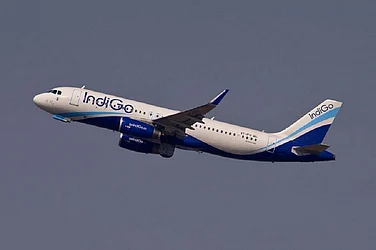There's frenetic activity on the waterfront. With the recent rush to acquire bulk carriers, the tide seems to have finally turned in favour of Indian shipping companies. The buzz is that if you buy a ship in the morning, the chances are it will be chartered by a European or US shipping line by the afternoon. Well, almost. Two months ago, Bombay-based Tolani Bulk Carriers bought a ship from Kobe Shipping of Japan with instructions to christen her Big Glory. The nomenclature turned out to be apt. Even before the ship was delivered, it was put on hire at fabulous rates by a European shipping company.
The Great Eastern Shipping Company, another Bombay-based firm, has bought five ships since last August. The latest, Jag Roshni, delivered on November 29, was put on charter immediately at lucrative rates. The firm hopes to add another handymax bulk carrier (30,000-40,000 tonnes) and increase its fleet to 30 ships from the present 20 by the end of fiscal year 1996.
India's shipping fleet has grown by over 6 per cent since April 1993. The Shipping Corporation of India has increased its fleet by 6 per cent, Essar Shipping by 14 per cent, Great Eastern by 4 per cent, Varun Shipping by 59 per cent (on a small base), and South India Shipping (SISCO) by 4 per cent.
Great Eastern has also sold scrapped or entire ore/oil bulk carrier fleet and tankers. Essar Shipping has transferred a major portion of its dry cargo bulk carrier fleet to SISCO. Varun Shipping is attempting to diversify its risks by expanding into bulk carriers, which now comprise 43 per cent of its fleet.
What accounts for this sudden surge in the shipping industry? One reason is that the Baltic Freight Index (BFI), the monitor of the world cargo industry which indicates an average of freight rates on 10 major routes, rose from a low of just over 1,000 in 1992 to a high of 2,351 in early May last year. The BFI is an important benchmark for the industry as it is based on actual rates and futures. The index has been rising steadily over the past year. It bottomed out in July at 1,937 and peaked again at 2,122 on August 25. Then from this mighty crest, the index started its plunge and troughed down to 1,538 on November 2. By November 20, it had surged again to 1,753, closing 70 points lower at the end of the month. And after a slump in December, it rose again in mid-January, eventually touching 1,535 on January 23.
But despite the hiccups, the average BFI between January and November 1995 rose by almost 40 per cent over the corresponding period in 1994. Says a Great Eastern official: "It is a simple demand-supply ratio. Too much cargo chasing too few ships and expectations about more gave the fillip to the index."
A lot of the cargo movement also has to do with the rebuilding of China. Says J.H. Khan, senior vice-president, J.M. Baxi & Sons, a Bombay-based diversified shipping firm: "There have been reports about a famine in China which has encouraged a lot of grain movement towards the country." The International Grain Council expects world trade in grain to have grown by over 6.6 per cent over the past year.
Traditionally, bulk carriers have been dominated by coal, grain and iron cargo. Chinese ore imports increased by 13 per cent during the first half of the year. In the coal sector, seaborne trade in 1995 too is set for a healthy increase. Australian shipments are likely to grow by over 5 per cent while US exports are surging as domestic demand slackens and world prices hold firm.
While demand for coal from Europe has diminished, Australia, Japan and other Asian countries account for major growth in steam coal consumption. In Japan alone, total coal imports in 1995 are projected at 123 million tonnes, a 5 per cent hike over 1994. India's appetite for coal imports has also increased, while coastal coal trades are witnessing a strong growth. The Tamil Nadu Electricity Board has 11 ships on charter constantly to get coal from the ports of Haldia, Paradip and Vishakhapatnam.
And the effect on the Indian shipping companies? The demand for bulk carriers has gone up. With the BFI surging, the charter rates too have shot up. A typical less-than-10-year-old handymax carrier that fetched $8,000-9,000 a day brought in $10,000-12,000 a day when the BFI peaked.
Experts claim that for an average hike of 40 per cent in the BFI, most shipping companies owning bulk carriers should post an additional profit of a similar amount. The companies likely to benefit are Chowgde Shipping, South India Shipping, and Varun Shipping, all of whom have chartered their ships in the lucrative Atlantic-Far East sector. For the industry then, it is 'Ships Ahoy'.


























